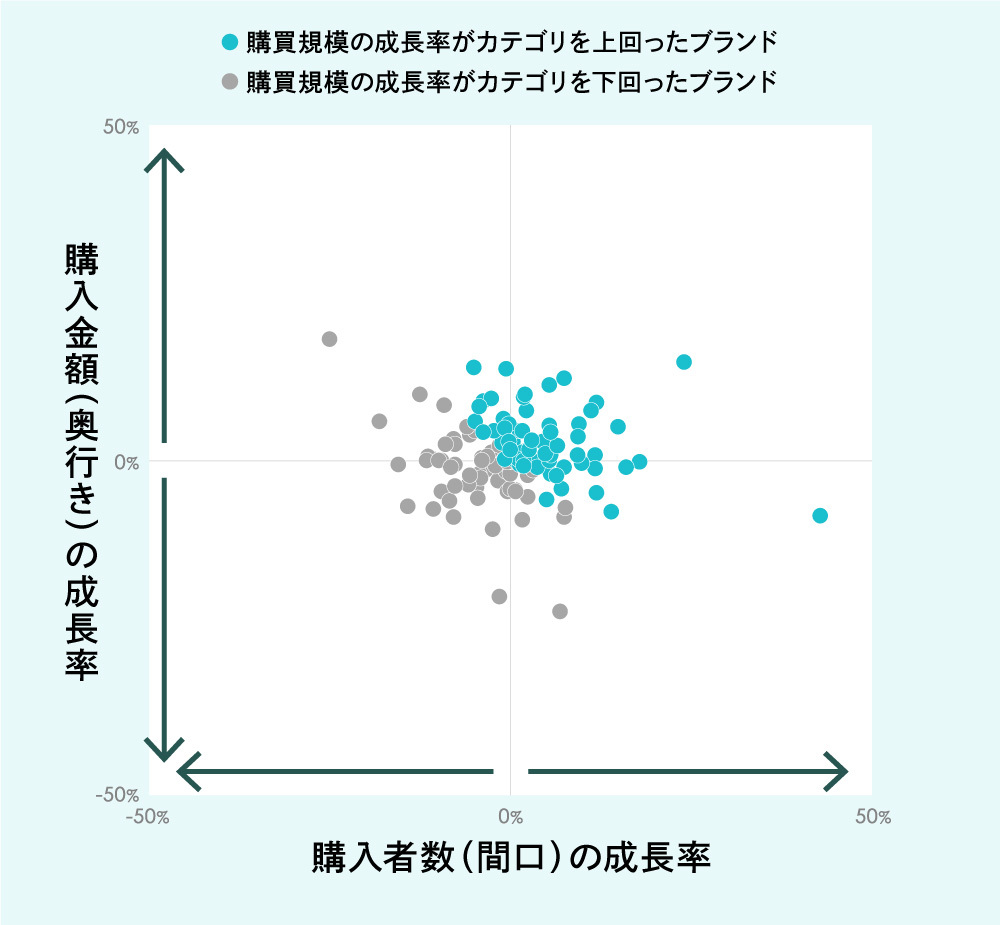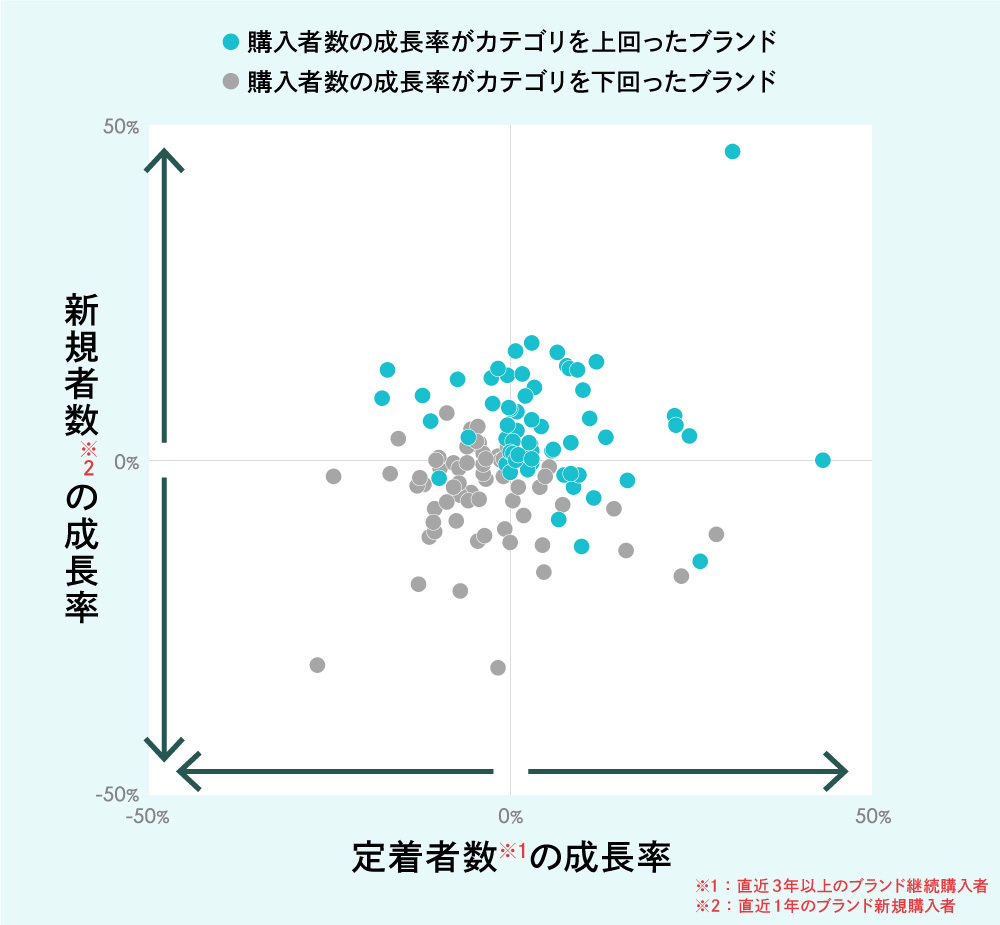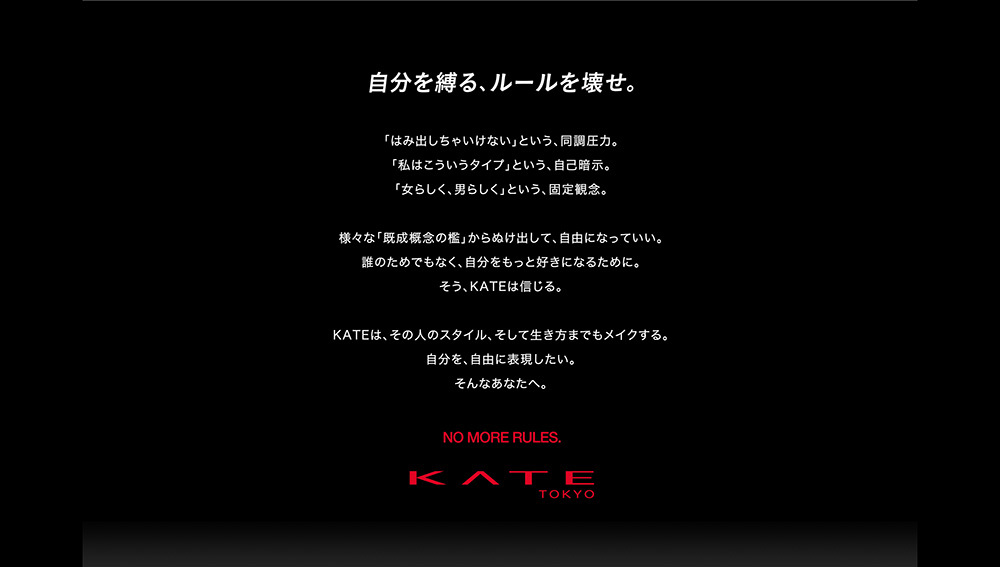Note: This website was automatically translated, so some terms or nuances may not be completely accurate.
What Makes a Brand "Chosen Continuously in an Era of Price Increases"? The Case for Engagement Design

It's a challenging era to get consumers to choose a brand and keep choosing it.
Repeated price increases have made consumers' purchasing decisions increasingly stringent. Furthermore, beyond price hikes, the environment surrounding modern brands has grown complex—marked by chronic population decline, homogenization of functional value, and increasingly unpredictable social conditions. Many companies likely find themselves uncertain about what core principles to adopt when engaging consumers.
Intage and Dentsu Inc. conducted surveys on consumer purchasing data and brand awareness during 2021-2023, a period marked by both the COVID-19 pandemic and simultaneous price hikes. The findings highlighted the critical importance of "engagement design" – ensuring brands are present in individuals' daily lives and fostering positive emotional associations.
Kanako Ida of INTAGE, which holds vast consumer data, and Chika Mitsui of Dentsu Inc., known for building integrated brand experiences, discuss the potential of engagement design to create brands resilient to price hikes and change.
*See the end of the article for survey details
<Table of Contents>
▼What distinguishes brands that lost customers during price hikes from those that retained them?
▼Brands that keep getting chosen start with "Engagement Design"
▼KATE, which proposed brand experiences based on deep customer understanding, achieved a V-shaped sales recovery
What's the difference between brands that lost customers and those that retained them after a price hike?

──Please tell us about the background for conducting this survey and the underlying changes in the times.
Mitsui: In recent years, the environment surrounding society has changed rapidly—driven by rapid technological advances, market globalization, unstable world affairs, and the COVID-19 pandemic. Brands must continue to grow within this challenging environment, often described as "VUCA," where unpredictable events occur one after another. Compounding this situation are the price increases that have persisted over the past few years.
Indeed, with some consumers actually abandoning brands due to price increases, we felt it was the right time to re-examine what it truly means to build a brand that continues to be chosen by customers. Therefore, we collaborated with INTAGE, which possesses Japan's largest consumer data, and Dentsu Inc., which has consistently focused on building comprehensive brand experiences. Together, we analyzed consumer purchase data and awareness data to examine the characteristics of brands resilient to price increases and change.
Ida: This study utilized Intage's SCI (National Individual Consumer Panel Survey) data. We analyzed consumer purchasing behavior and shifts in awareness from 2021 to 2023 across major brands in various categories, including daily necessities, groceries, and beverages.
This time, we examined consumer purchasing behavior using two metrics: "breadth" (number of purchasers) and "depth" (purchase amount). We combined these to calculate "purchase scale." Despite the price hike environment, a significant number of brands showed growth above the average in both breadth and depth.

──This visualizes brands that expanded their purchase scale during the 2021-23 price increase period.
Ida: Yes. Furthermore, we analyzed these brands from two perspectives: "acquisition of new customers" and "retention of existing customers." We found that brands steadily increasing their reach (number of purchasers) were successfully achieving both. Regarding depth (purchase amount), we also confirmed a strong tendency for customer retention, particularly among existing customers, to have a significant impact.
──Does this mean that the more existing customers are retained, the higher the average purchase amount per customer becomes?
Ida: Yes. Based on our analysis of approximately 130 brands across 7 categories, using illustrative figures, if a customer's annual purchase amount in their first year is 100, it tends to increase steadily: 200 in the second year, 300 in the third year, and so on. This means nurturing relationships with existing customers is crucial. Conversely, if price increases cause them to leave, it significantly hurts sales.

Mitsui: It's those "customers who keep buying" that support a large portion of the sales for brands that continue to grow, right? Companies tend to focus heavily on acquiring new customers, but I think this has once again highlighted how significant the impact of retaining existing customers is on sales.
Ida: So why do customers of brands that continue to grow despite price increases keep choosing those brands? To dig deeper into this, we conducted a survey on the "loyalty" mindset of brand purchasers. This time, we didn't just look at whether loyalty was high or low; we broke loyalty down into three variables.
The first is "risk avoidance" – where consumers passively choose a brand, perhaps because it's a daily consumer good and they just keep buying the same thing out of habit.
The second is "familiarity" – continuing to buy because of a sense of closeness to the brand or trust that it will meet expectations.
And third is "favoritism" —continuing to buy with a strong sense that this brand is perfect for you, that you are a fan of this brand.
〈Decomposing Customer Loyalty into Three Variables〉
- Risk Aversion → Passively choosing brands
- Familiarity → Feeling of familiarity or trust toward the brand
- Advocacy → Strong fan consciousness toward the brand
The statistical methods are a bit complex, so to summarize the conclusion here: customers with "affinity" or "superfan" loyalty indeed showed higher intent to continue purchasing. Conversely, customers with "risk avoidance" loyalty tended to have lower intent to continue purchasing.

The green in the pie chart indicates the volume of the On group (those with loyalty to that variable) for that variable, while the gray indicates the volume of the Off group (those without loyalty to that variable). It can be seen that for continued purchases, it is important to form loyalty, such as " ," "familiarity," and "favoritism," rather than just "risk avoidance."
Brands that continue to be chosen are born from "engagement design."

──In times of price increases, it's easy to assume that risk-averse factors like price influence loyalty. But in reality, "affinity" and "favoritism" are more strongly correlated with continued purchase intent.
Mitsui: Our view is that to become a brand resilient to price increases, it's crucial for customers to think "This brand is good" rather than "This brand will do." While thriftiness is on the rise in society now, I believe there's a rhythm to such consumption.
In other words, it's not about saving on everything or stopping purchases altogether; there are also things people are willing to spend money on and choose carefully. Positioning our brand within that deeper layer of this rhythm is crucial.
──What should brands focus on to become the chosen brand?
Mitsui: I believe it's about deeply understanding each individual's life and ideals, then proposing brand experiences aligned with their personal direction. Consumers inherently have their own ideal lifestyles and self-images. When a brand experience matches that ideal, the recognition "This brand brings me closer to my ideal self" emerges, significantly increasing the likelihood they'll actively choose that brand.
We call the communication design that fosters positive emotional associations in consumers and deepens the relationship between brand and consumer "engagement design." To put it simply, it's communication centered on the customer, not the brand.
Ida: Previously, at INTAGE, we conducted interviews about a certain beverage. One respondent's reason for choosing that brand really stuck with me. They said, "When I bought a cheaper brand, I noticed my family drank less of it. That's when I realized, 'Ah, this is a point I shouldn't compromise on.'" In other words, they were saying that when buying something the whole family happily drinks every day, they don't care about a 10 or 20 yen price difference.
Mitsui: I understand. Especially since the pandemic, many people have likely identified things in their lives that are absolutely essential to them. Even while living frugally, they're willing to spend money on those important things. Every customer must have such priorities, and I think it's crucial to propose brand experiences aligned with that direction.
Ida: Brands may also need mechanisms to help consumers explicitly recognize these feelings, which are essentially their "favorites." Traditional brand communication was primarily a one-way relationship where the brand provided value and consumers received it. But personally, I feel that the brands surviving today have shifted more toward a stance of proposal rather than mere provision.
You could say it's a shift from providing standardized experiences to proposing individualized ones. Each person can discover for themselves how a product fits into their own life.
──I see. From the perspective of CRM and LTV, which have been gaining traction in recent years, that sensibility becomes increasingly important, doesn't it?
Mitsui: Exactly. In marketing too, simply grouping high-spending or frequent buyers by gender and age won't allow us to deeply understand each individual's feelings and expectations. I believe focusing on engagement design—one that involves PDCA cycles and aims to enhance the precision of our relationships with each consumer—will lead to better results. And it's about making them realize, "This brand is essential to what matters most in my life and daily existence."
KATE, which proposed brand experiences based on deep customer understanding, achieved a V-shaped sales recovery.

──Are there any examples of brands that have successfully built customer relationships by implementing engagement design?
Mitsui: Kanebo Cosmetics' "KATE" is a prime example. KATE has championed its "NO MORE RULES." philosophy for over 20 years. In 2020, it re-examined its purpose and launched numerous brand experiences aimed at offering customers "the exhilaration and tangible feeling of transforming into their desired selves."

https://www.nomorerules.net/
──The idea of "the person you want to become" is essentially a "customer-centric" way of thinking, right?
Mitsui: Yes. For example, even during the pandemic when customers couldn't visit stores, KATE provided online content. We enabled experiences like "This is how this color actually looks when worn" within a virtual space on their smartphones. We've consistently proposed various experiences aligned with the "the person you want to become" concept.
The "ideal self" should be different for each person, right? That's why, through our official LINE initiatives, we deepen relationships with existing customers by first understanding their fundamental desire: "What kind of self do they want to become?" Based on that, we regularly propose products, techniques, and information tailored to each pattern of the "ideal self" to support them. Of course, some people still don't know their ideal self yet, so we propose different experiences for each phase.

Mitsui: As a result, while some customers previously chose KATE for convenience or as a risk-averse option, we've seen a steady increase in customers making a specific choice to buy KATE. This has significantly contributed to sales growth.
Ida: Actually, the point makeup market is currently undergoing major shifts, with emerging brands like Korean cosmetics gaining popularity. In other words, it's a tough environment to stay chosen, and KATE was struggling too. But looking at the purchase data over the last three years, sales have made a remarkable V-shaped recovery.
Mitsui: Amidst a rapid rise in cost-consciousness, the fact that we're increasing "depth = purchase amount" is largely due to KATE's commitment to becoming a more customer-centric brand and the engagement design we implemented to achieve that.
These initiatives began in 2021 and were implemented simultaneously with the dizzying environmental changes like the pandemic and price increases. While KATE hasn't raised prices excessively, it's not a cheap brand either, especially as budget brands maintain strong popularity. Yet, more customers are choosing to stick with KATE and support it.
Ida: Data also reveals an intriguing trend: customers who purchase KATE's hit product, "Lip Monster," increasingly buy other KATE items like eyeshadow and base makeup afterward. This "cross-category purchasing" behavior is becoming more common. We've observed across other brands that higher levels of this cross-category purchasing within a single brand correlate with stronger conscious loyalty.

Mitsui: Cosmetics are products where you can easily use multiple brands simultaneously—like having several lipsticks from different companies in your makeup bag—making it easy to try various brands and leading to fast-changing trends. Within this environment, it's truly remarkable that more customers are choosing to buy KATE products because they enjoy the KATE brand experience.
──Considering the implementation period starting in 2021, the sustained sales growth is truly remarkable.
Ida: However, as is true for any brand, the social environment and consumer needs are constantly changing. Therefore, we must continuously update the brand experience accordingly. To achieve this, it's crucial to manage things continuously with data and keep the PDCA cycle turning.
Mitsui: When considering customer experience, we often talk about "emotional value," but I believe there are aspects—various elements of people's lives and existence—that cannot be captured by that alone. I think the clues to building a brand that continues to be chosen lie deep within that realm. Going forward, by leveraging data while engaging with deep consumer insights, we can further enhance the precision of our PDCA cycles.
Ida: For example, previously we could only categorize customers as "new or existing." By analyzing behavioral and attitudinal data more deeply, I believe we can create finer classifications even within the existing customer segment.
Mitsui: That way, we can gain a clearer view of consumers—like what points increase their "favorite" status for a brand, and whether that "favorite" status will be sustained. This should also expand what brands can do in response.
──Could you share a message on what kind of relationship brands should build with consumers in the coming era?
Mitsui: I believe we should view change not as a "threat," but as an "opportunity" for brands to truly engage with what customers genuinely value. Beyond just price increases, as population decline continues, it comes down to how sincerely we can engage with customers seeking "what's truly good for them." That sincerity will determine whether a brand can achieve significant growth.
Ida: Within INTAGE, we've frequently discussed "long-selling over best-selling" in recent years. While creating short-term hits is important, we feel it's crucial to build experiences tailored to consumers and continuously update the brand to achieve long-term success. The key lies in engagement design centered on the customer. We aim to continue contributing to brand growth as a PDCA partner, starting with understanding the current state and fostering ongoing engagement.
Mitsui: By combining Intage's position as Japan's leading holder of rich consumer data with Dentsu Inc.'s expertise in consumer understanding and relationship design, we believe we can contribute to building brands resilient in an era of price increases, starting with engagement design. If you're interested, please feel free to start by trying Intage's "Behavior/Attitude Loyalty Diagnosis" at !
[Survey Overview]
・Survey Name: Brand Survey by INTAGE
・Target Categories: Cup instant noodles, chocolate confectionery, unsweetened tea, beer, RTD beverages, shampoo, toothpaste, point makeup
・Target Brands: Brands with a purchase share of 1% or more within each category
・Data Source: INTAGE SCI Data
・Area: Nationwide
・Period: January 2021 - December 2023
・Retail Format: All formats
・Indicators: CAGR (Compound Annual Growth Rate) of Purchaser Count, CAGR of Purchase Amount per Purchaser, Difference from Category Median
Was this article helpful?
Newsletter registration is here
We select and publish important news every day
For inquiries about this article
Author

Kanako Ida
INTAGE Inc.
Marketing Partner Division 1 Marketing Planning and Promotion Department
Manager
Engaged in research and sales for major companies in the durable goods and service industries, and in business promotion within the advertising and marketing domains for major manufacturers. Since 2020, has been in the current position, working on developing consumer-centric marketing support programs.

Chika Mitsui
Dentsu Inc.
First Integrated Solutions Bureau
Marketing Strategist
Engaged in defining challenges in marketing and business domains, designing customer experiences to maximize LTV, and strategic planning for product/service development. Skilled at articulating the frustrations and dilemmas people face in the VUCA era—an era of volatility, uncertainty, complexity, and ambiguity—and conceptualizing mechanisms that drive corporate business growth. At the Food Lifestyle Lab, serves as a researcher involved in new business development centered on the theme of "food accessibility."


